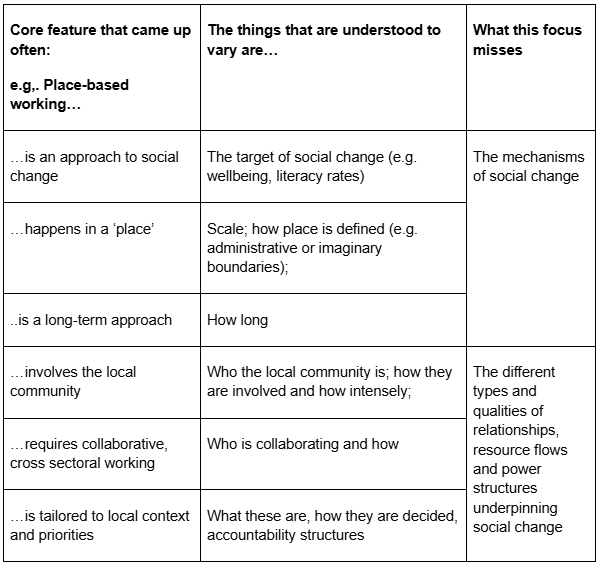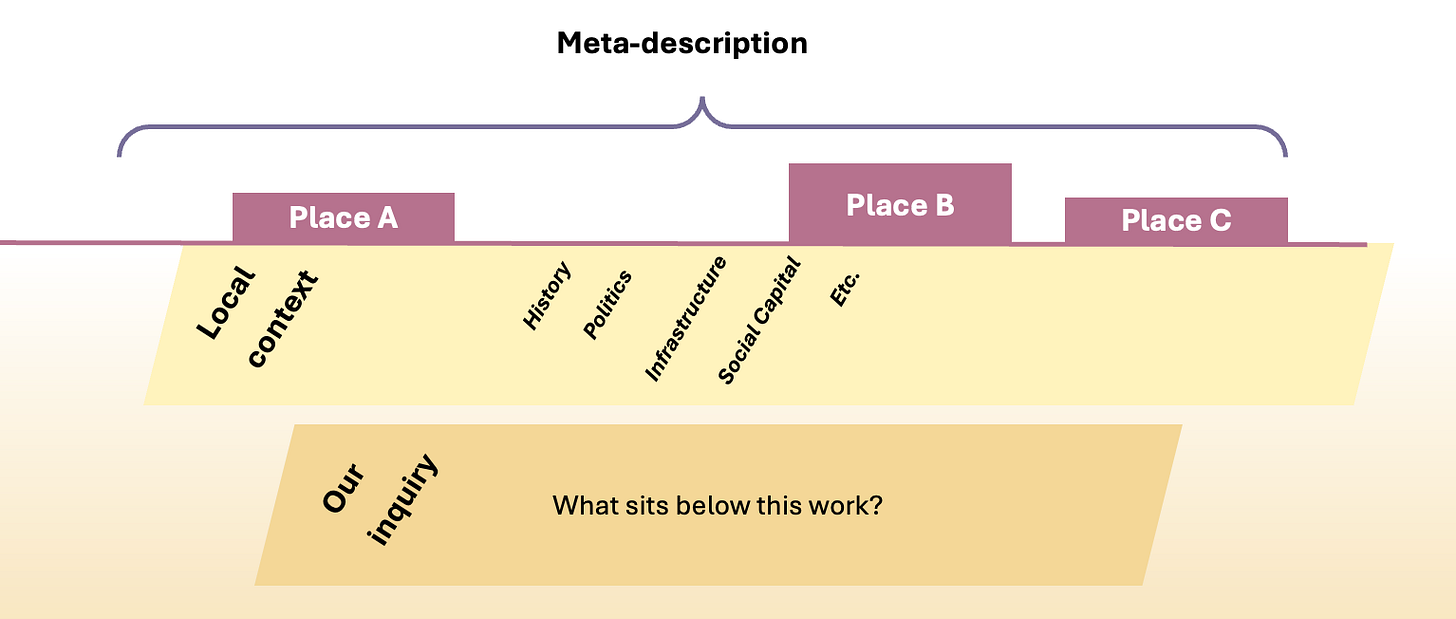Why are existing definitions of place-based working so unhelpful for evidence?
Descriptions aren’t definitional
We had a hunch that the current set of definitions available for place-based working don’t get us to the heart of why it is that it is effective for driving social change. Which makes it much harder to know what types of evidence we need to learn about the effectiveness of place-based working.
To explore this, we found many different definitions for place-based working in the literature. We reviewed the common features of these definitions to find out what they could tell us about the field.
Here’s what we found:
There were common components across definitions (e.g. an emphasis on collaboration or longer-term work) – suggesting some agreement about what constitutes place-based working generally
There was however, no clear agreement about the exact list, or relative importance of the different elements sitting within place-based working – suggesting that this is understood and emphasised differently by different stakeholders
Crucially, these descriptions were all descriptive of practice. This means they aimed to give a sense of place-based work through describing the type of work people engage in, rather than systematically mapping out the underlying mechanisms of change involved in place-based working.
This type of description can feel more like looking down on a set of places, seeing the tops of trees, and being aware that the forest they sit in looks complex.
The challenge with a set of definitions like this is, they shift the focus onto an outside view of complexity of the work, and away from an internal view on how social change actually happens. But generally, how change happens is something that can’t be seen from above.
There is a risk that descriptive approaches are limited by people only looking to describe the work they’re interested in, pre-defining what the work can be. We believe that this is the root of the evidence challenge.
What were some of the common features highlighted in the descriptive definitions?
We argue that we need to shift focus to a different type of definition if we are to understand place-based working more deeply. We want to move beyond a description of what the work looks like to build a map of what actually drives change in place-based working. What can we learn about the underlying mechanisms of change and how these vary in different contexts? How can we better understand the different mechanisms that are more appropriate to different places? And, ultimately, what does this mean for the evidence we seek?
This is the last post in our context section. In the next few posts we propose an approach to developing a taxonomy of place-based working that deals with these underlying mechanisms. To get to this taxonomy, we reviewed and systematically coded a wide range of UK and international practice in order to identify the key dimensions of place-based work. We were keen to strip away descriptions to get to the heart of the approach in each case. And this left us with a set of features that can be combined in various ways to create different types of practice within the field.








Really keen to see where you've got to. I'll read your next few posts with interest!